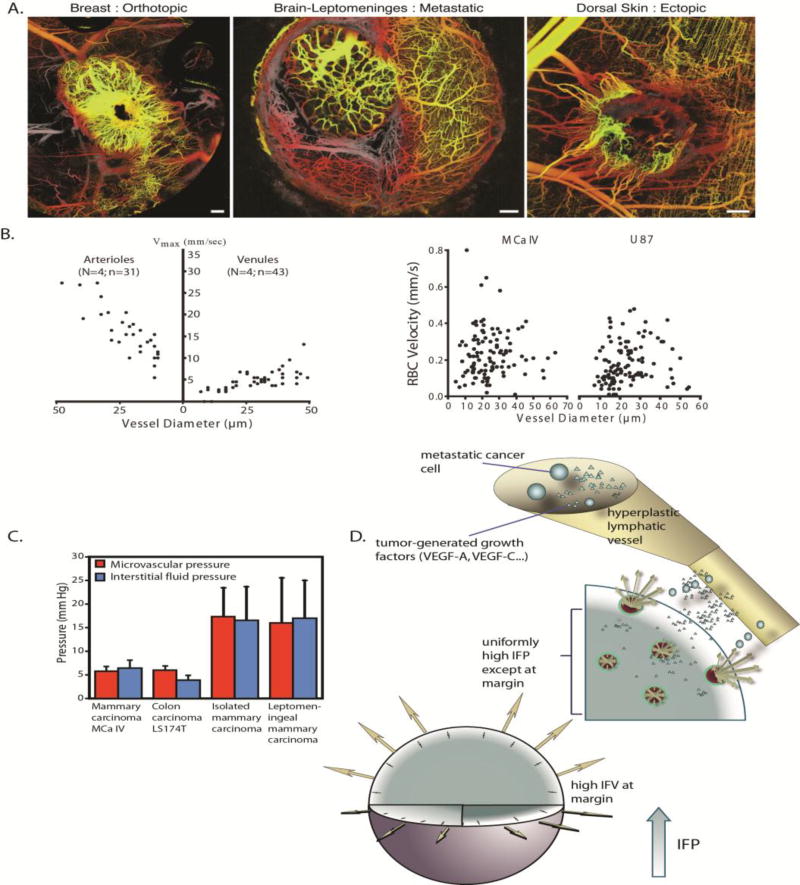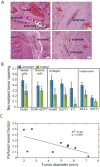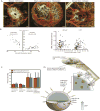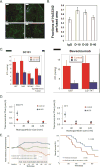
| PMC full text: | Trends Cancer. Author manuscript; available in PMC 2019 Apr 1. Published in final edited form as: Trends Cancer. 2018 Apr; 4(4): 292–319. Published online 2018 Mar 13. doi: 10.1016/j.trecan.2018.02.005 |
Figure 5

Fluid mechanics of cancer
(A) Tumor vasculature is irregular and tortuous, lacking a structural hierarchy. The vascular network structure depends on the site of tumor growth (reproduced with permission from [6]). (B) Red blood cell (RBC) velocity in tumors (right) is an order of magnitude lower than that in normal tissues (left) and lacks a correlation with vessel diameter (reproduced with permission from [80]). (C) IFP is elevated and equals microvascular pressure (reproduced with permission from [84]). (D) IFP drops at the tumor periphery resulting in fluid flow from the tumor towards the host tissue. This flow can assist the escape of growth factors, such as VEGF, and metastatic cancer cells fueling tumor progression (reproduced with permission from [20]).







